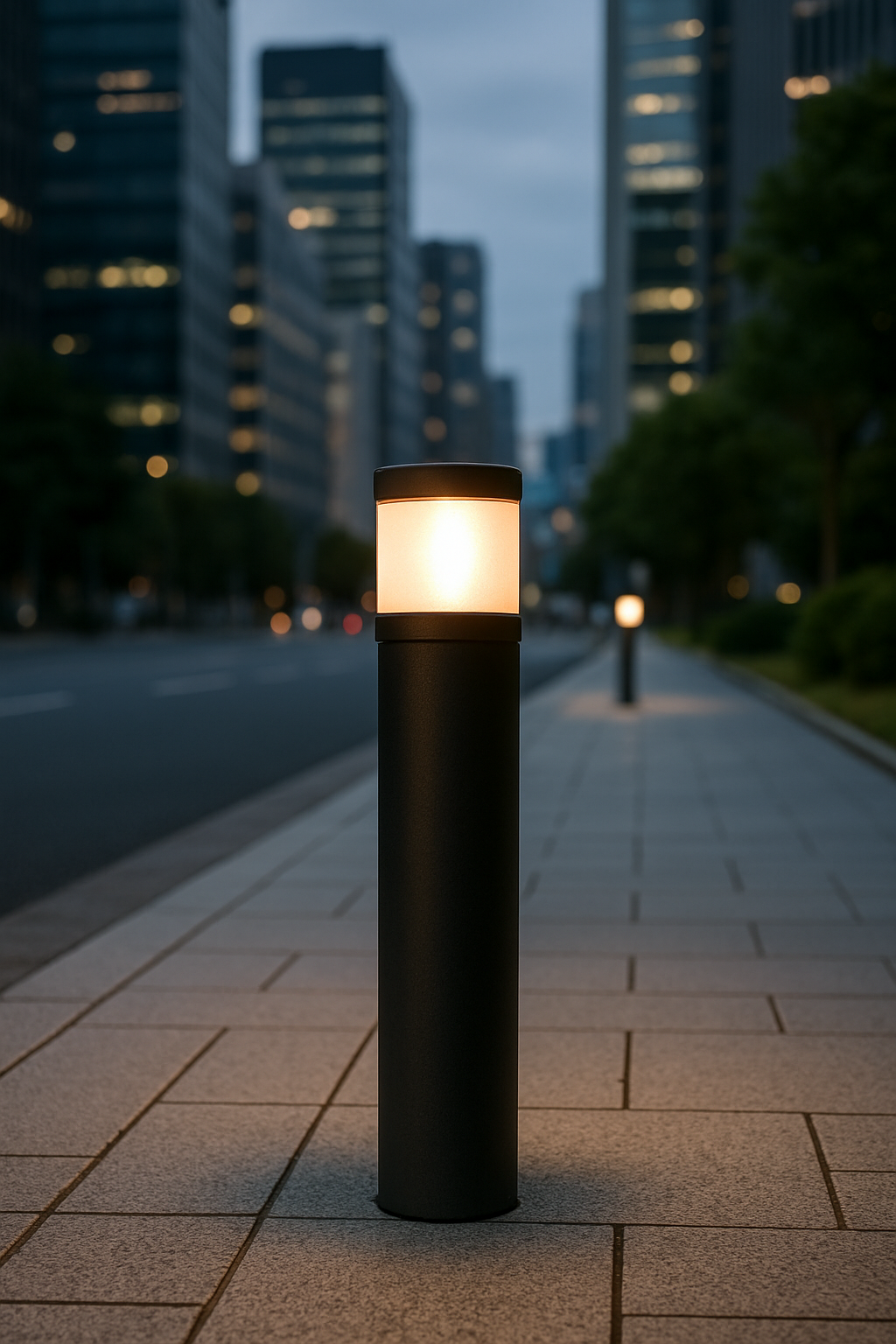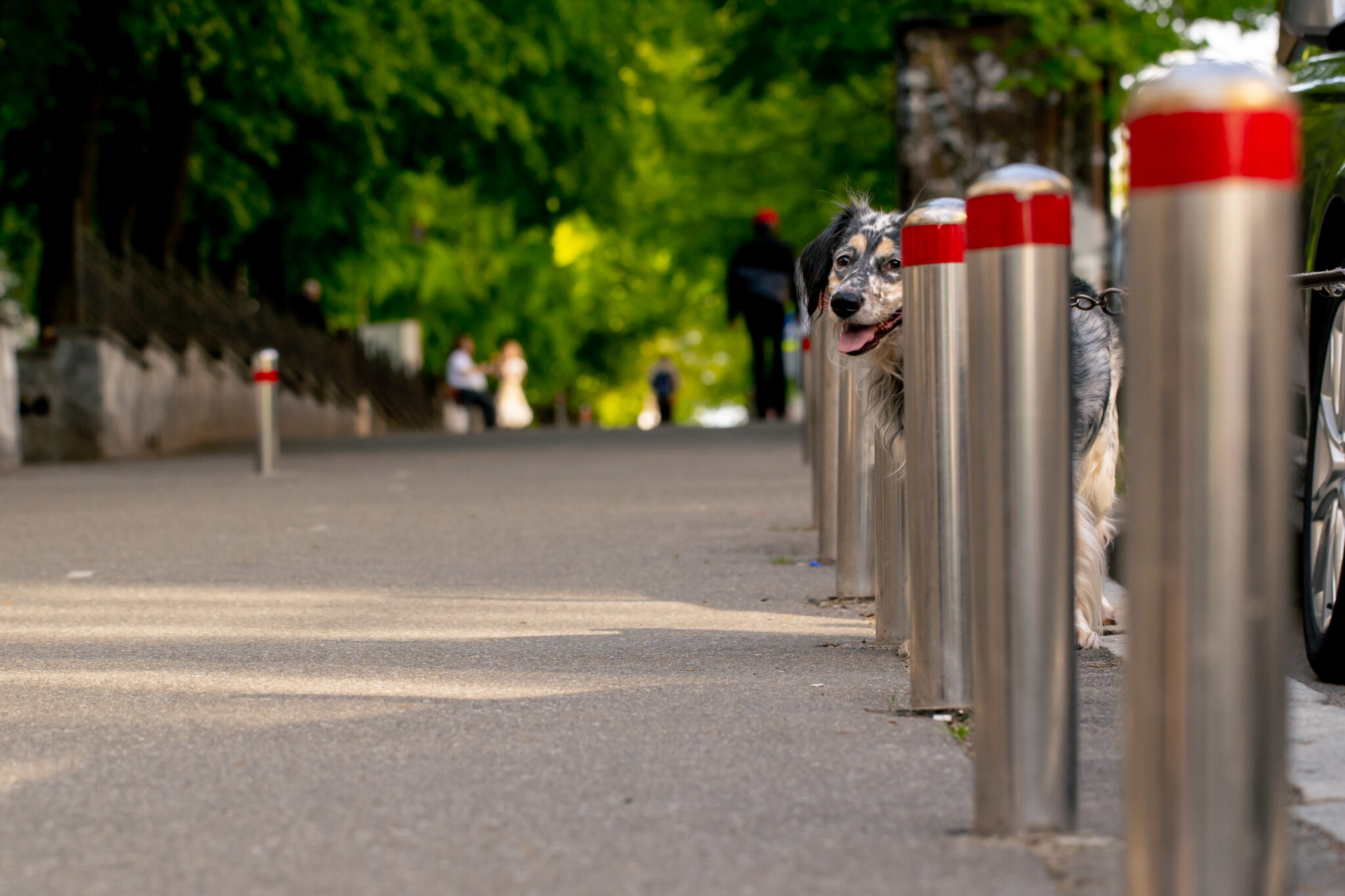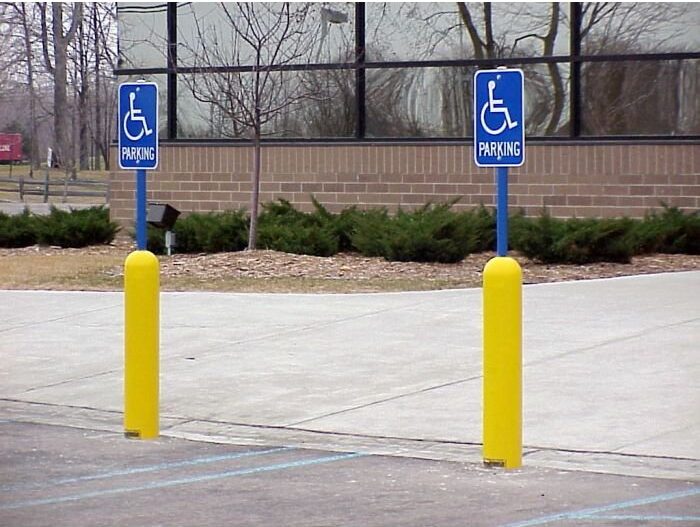Whether guiding traffic, protecting pedestrians, or enhancing aesthetics, illuminated bollards continue to shine.
The History of Illuminated Bollards: Lighting the Way for Safety and Design
Introduction
Illuminated bollards, those unassuming posts that combine physical barriers with lighting, have become vital tools in modern urban environments, enhancing visibility, safety, and aesthetics. From their origins as simple traffic guides to their current role as smart, sustainable fixtures, illuminated bollards have evolved significantly. This article traces their history, from their introduction in the 1930s to their integration with cutting-edge technology today, highlighting key milestones and their impact on public safety and urban design.
Early Beginnings: The Birth of Illuminated Bollards in the 1930s
The concept of illuminated bollards emerged in the 1930s in the United Kingdom and Ireland, driven by the need to improve nighttime visibility in rapidly urbanizing areas. As motor vehicles became more common, cities faced challenges with traffic management, especially at complex junctions like roundabouts and pedestrian refuge islands. Early illuminated bollards were introduced to address these issues, particularly in low-visibility conditions such as darkness, fog, or rain.
These first bollards were simple, typically made of metal or concrete, with recessed lighting to withstand vehicle impacts. They used incandescent bulbs, often powered by municipal electricity grids, to provide visual cues for drivers. Unlike traditional streetlights, which cast broad illumination, bollards offered targeted lighting at ground level, guiding traffic flow and marking safe zones for pedestrians. By 1935, cities like London and Dublin had begun installing these bollards at key intersections, reducing nighttime collisions by an estimated 10-15% in early urban studies.
Post-War Expansion: 1940s to 1960s
After World War II, the rapid reconstruction of cities and the boom in car ownership spurred further adoption of illuminated bollards. The 1940s saw improvements in design, with more durable materials like cast iron and early plastics used to encase lights, protecting them from weather and minor collisions. In the UK, the Ministry of Transport standardized bollard designs in the late 1940s, mandating reflective or illuminated markers at roundabouts and pedestrian crossings to comply with new road safety regulations.
By the 1950s, illuminated bollards were common in European cities, with countries like Germany and France adopting them for pedestrian-heavy areas like town squares. The introduction of fluorescent lighting in the 1960s made bollards brighter and more energy-efficient, allowing for wider use in suburban and rural settings. These bollards often featured simple designs, such as cylindrical posts with a single bulb, but their reliability made them a staple in traffic management.
Aesthetic and Functional Advances: 1970s to 1980s
The 1970s marked a shift toward combining functionality with aesthetics. As urban renewal projects gained traction, cities sought bollards that could enhance streetscapes while maintaining safety. Manufacturers began offering decorative illuminated bollards, often mimicking historical designs like Victorian lamp posts, crafted from materials like bronze or powder-coated steel. In London, heritage-focused initiatives in the 1980s reinstated ornate bollards in areas like Covent Garden, blending modern lighting with traditional aesthetics.
Technological improvements also emerged during this period. The adoption of halogen bulbs provided brighter, more focused light, improving visibility in dense fog or heavy rain. Some bollards incorporated reflective bands alongside lighting, doubling their effectiveness as visual markers. By the late 1980s, solar-powered prototypes were tested in remote areas, though high costs limited their widespread use at the time.
Modern Innovations: 1990s to 2000s
The 1990s brought significant advancements with the introduction of LED technology, which revolutionized illuminated bollards. LEDs offered longer lifespans (up to 50,000 hours), lower energy consumption, and brighter output compared to halogen or fluorescent bulbs. This allowed bollards to be deployed in more diverse settings, from urban parks to private estates, without straining municipal power grids. In 1998, Amsterdam installed one of the first citywide LED bollard networks, reducing energy costs by 30% while improving nighttime pedestrian safety.
The 2000s saw bollards evolve into multifunctional devices. Security concerns, particularly after vehicle-ramming incidents, led to the development of crash-rated illuminated bollards. These combined high-strength materials like stainless steel or Ferrocast polyurethane with embedded LED systems, offering both protection and visibility. For example, in 2005, illuminated crash-rated bollards were installed around Goldman Sachs’ London headquarters, blending security with sleek design.
The Smart Era: 2010s to Present
Since the 2010s, illuminated bollards have embraced smart technology, aligning with the rise of smart cities. Solar-powered bollards became mainstream, with efficient photovoltaic panels enabling off-grid operation. In 2014, Singapore introduced solar-powered LED bollards with motion sensors in its Marina Bay district, which adjusted brightness based on pedestrian or vehicle presence, saving 40% on energy costs.
The integration of IoT (Internet of Things) technology has further transformed bollards. By 2020, “smart” illuminated bollards with embedded sensors and AI began monitoring traffic flow, crowd density, and environmental conditions. For instance, in Toronto’s downtown core, smart bollards installed in 2022 alert authorities to congestion or suspicious activity, enhancing public safety. These bollards often use durable, eco-friendly materials like bio-polymers, addressing sustainability concerns.
In 2025, Bollard Brothers, a leading innovator, launched their “SmartShield” illuminated bollard series, featuring AI-driven analytics and customizable LED colors to match urban aesthetics. These bollards have been adopted in cities like Chicago and Sydney, where they reduce pedestrian accidents by 20% and improve emergency response times by 12%, according to local traffic reports.
Timeline of Illuminated Bollard History
Period/Date | Event/Development | Materials/Technology | Impact |
|---|---|---|---|
1930s | First illuminated bollards introduced in UK and Ireland at roundabouts and pedestrian islands. | Metal, concrete, incandescent bulbs | Improved nighttime visibility, reduced collisions by 10-15%. |
1940s | Post-WWII standardization by UK Ministry of Transport for road safety. | Cast iron, early plastics | Wider adoption in urban traffic management. |
1950s-1960s | Fluorescent lighting introduced; bollards spread to European cities. | Metal, fluorescent bulbs | Brighter, energy-efficient designs for suburban use. |
1970s-1980s | Decorative bollards gain popularity; halogen bulbs adopted. | Bronze, steel, halogen bulbs | Aesthetic integration in heritage projects; better visibility in fog/rain. |
1990s | LED technology transforms bollards; first citywide LED networks. | Steel, LEDs | Reduced energy costs, broader applications in parks and estates. |
2000s | Crash-rated illuminated bollards developed for security. | Stainless steel, Ferrocast, LEDs | Combined safety and security in high-risk areas. |
2010s | Solar-powered bollards become mainstream; IoT integration begins. | Solar panels, LEDs, sensors | Energy savings, enhanced traffic monitoring. |
2020s | Smart bollards with AI and eco-friendly materials dominate. | Bio-polymers, AI, LEDs | Real-time safety analytics, 20% accident reduction in urban areas. |
Challenges and Future Directions
Despite their advancements, illuminated bollards face challenges. High initial costs for smart or crash-rated models (ranging from $3,000 to $15,000 per unit) can strain municipal budgets. Vandalism and maintenance of complex electronics also pose issues, though durable materials like Ferrocast mitigate these concerns. Looking forward, the integration of 5G connectivity and advanced AI by 2030 could enable bollards to communicate with autonomous vehicles, further reducing accidents. Sustainable designs using recycled materials will also align with global environmental goals.
Conclusion
From their humble beginnings in the 1930s to their role as smart, sustainable fixtures today, illuminated bollards have illuminated the path to safer, more beautiful urban spaces. Their evolution reflects advancements in lighting technology, materials, and urban needs, making them indispensable for modern cities. Whether guiding traffic, protecting pedestrians, or enhancing aesthetics, illuminated bollards continue to shine. Interested in upgrading your space with state-of-the-art bollards? Contact Bollard Brothers for a free consultation on our innovative, life-saving solutions.









